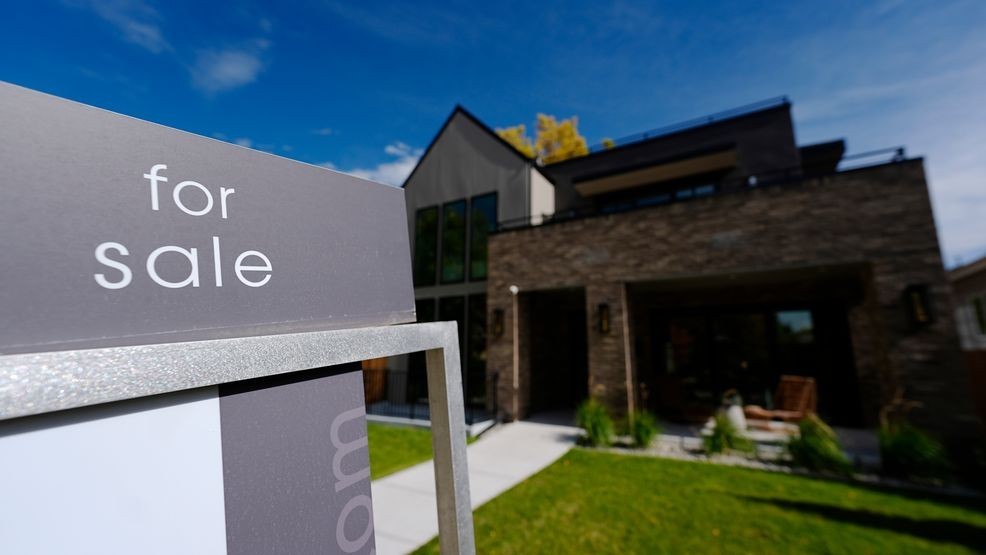WASHINGTON (TNND) — The housing market got a boost last month thanks to lower mortgage rates and a growing supply of homes sitting on the market, giving buyers some wiggle room to afford to make a purchase in a longstanding period of unaffordability.
Existing home sales increased 1.5% in September compared to the month prior, the National Association of Realtors said on Thursday. It was a 4.1% increase compared to last September and the highest pace in seven months, a rare point of optimism for a housing market that has been in a prolonged freeze over the last several years.
Sales were boosted with the recent moderation in mortgage rates, which have pulled more people off the sidelines and stirred pent-up demand for deals. Rates have been inching toward 6% this year with economic uncertainties and the start of a rate cutting cycle from the Federal Reserve.
“As anticipated, falling mortgage rates are lifting home sales,” said NAR chief economist Lawrence Yun. “Improving housing affordability is also contributing to the increase in sales.”
Mortgage rates fell to the lowest level since last year on for the week ending on Thursday at 6.19%. Last year, the average rate on a 30-year loan was 6.5%, according to mortgage buyer Freddie Mac.
“Mortgage rates continued to trend down this week, hitting their lowest level in over a year,” said Sam Khater, Freddie Mac’s chief economist. “At the start of 2025, the 30-year fixed-rate mortgage surpassed 7%, while today it hovers nearly a full percentage point lower. This dynamic has kept refinancings high, accounting for more than half of all mortgage activity for the sixth consecutive week.”
Lower mortgage rates help improve affordability through lower monthly payments, allowing buyers to expand their budgets and pool of potential homes to buy. The typical monthly payment in the U.S. was $2,556 for the four weeks ending Oct. 12, according to Redfin.
Some industry analysts believe rates getting below 6% as a potential breaking point to get more buyers back into the market and start buying homes. Most forecasts have rates holding relatively steady at their current levels for the rest of the year. The Mortgage Bankers Association is projecting the average 30-year rate will end the year at 6.5%, while Fannie Mae predicted 6.4%.
But affordability improvements are mostly limited to lower mortgage rates as September was the 27th consecutive month of price increases. The median existing home price has reached $415,200, which is 53% higher than before the pandemic.
New home prices are also expensive and builders are being hit by a wide range of tariffs that are making supplies more expensive, adding to the difficulties of building more homes to increase the nation’s supply.
While buyers are betting on more rate cuts from the Fed to lower mortgage rates, they are more likely to follow the most significant economic indicators. Rates could continue to drop if the labor market continues to weaken and inflation declines but would move back upward if hiring has a resurgence or prices tick back up.
Lower mortgage rates would also likely mean a more tenuous U.S. economy, which could threaten housing market activity with higher unemployment and fewer people able and willing to make a major financial decision like buying a home.
Along with lower mortgage rates, affordability has improved modestly thanks to more homes being put and sitting on the market. With more homes and less competition for them in the market, buyers are able to avoid bruising bidding wars that were a feature of the pandemic market that helped send prices soaring.
Homes are sitting on the market for an average of 33 days as of last month, up from 28 days a year ago.
Total inventory improved another 1.3% last month from August and was 14% higher than it was last September. There is a 4.6-month supply of unsold inventory based on the current sales pace, flat from August and an improvement from a year ago. A six-month supply is considered a balanced market.
“Inventory is matching a five-year high, though it remains below pre-COVID levels,” Yun said. “Many homeowners are financially comfortable, resulting in very few distressed properties and forced sales. Home prices continue to rise in most parts of the country, further contributing to overall household wealth.”
Part of the reason behind slim inventory is that most homeowners are locked into rates below 3% that were widely available during the pandemic, making them reluctant to take on today’s interest rates that are twice as high and purchase a new home. For many homeowners, cashing in on the major gains in equity has not been enough incentive to give up their rates.

